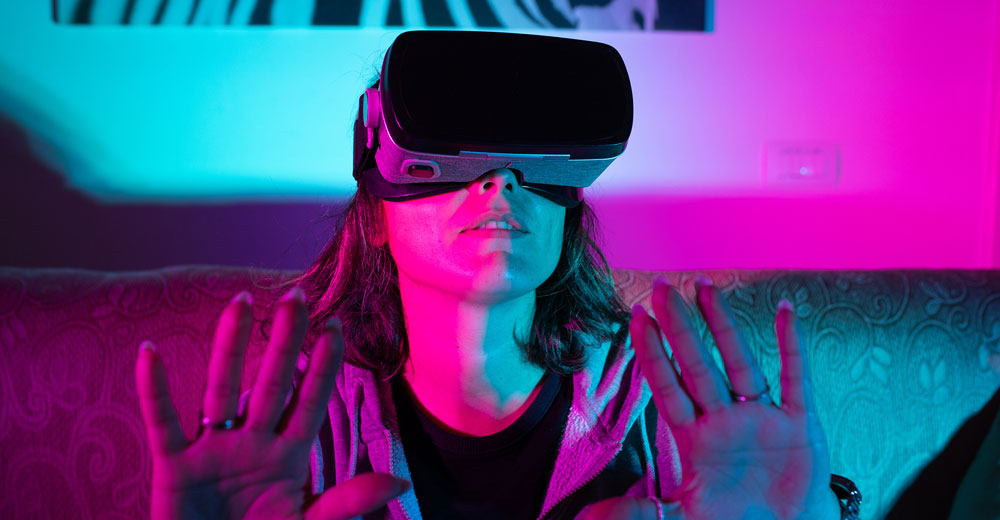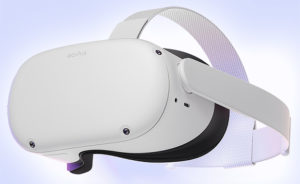Although Apple is expected to launch a mixed reality product sometime this year, don’t expect it to lead its users into the metaverse, according to a prominent watcher of the company.
The watcher, Mark Gurman, who writes the Power On newsletter for Bloomberg, wrote in the latest edition of the publication that the metaverse will be “off-limits” for Apple alternative reality products.
“I’ve been told pretty directly that the idea of a completely virtual world where users can escape to — like they can in Meta Platforms/Facebook’s vision of the future — is off-limits from Apple,” he wrote.
He noted that Apple believes that new visitors to virtual space will be more interested in “bursts” of activity rather than the immersive experience pushed by Mark Zuckerberg and company.
“Over time, everyone expects these virtual reality headsets will become lighter, less conspicuous and have longer battery life, but for the foreseeable future, they’re going to be devices for session-driven experiences,” observed Ross Rubin, the principal analyst with Reticle Research, a consumer technology advisory firm in New York City.
“You won’t be wearing them all day,” he told TechNewsWorld.
Head-mounted hardware is going to remain cumbersome for the next few years, added Gene Munster, co-founder of Loup Ventures, a venture capital firm in Minneapolis.
“Apple is being smart at focusing on shorter experiences that are more user friendly,” he told TechNewsWorld. “Over time, Apple will likely have glasses that are worn all day long.”
Embracing AR
Rubin pointed out some additional reasons Apple may be avoiding the metaverse at this time.
“They might not see a clear revenue model in it yet,” he said. “They tend to focus on broad business opportunities, even though their first headset is rumored to be more of a professional development tool.”
He also noted that a strategy deployed by Apple in the past is to hang back to see how a market develops.
“Then, when the hype dies down, they jump in and put their own spin on something,” he explained.
“If the metaverse became a successor to the web, I’m sure Apple would want a way to have their users participate in that, but that’s a long way off,” he added.
Apple’s embrace of augmented reality could also be playing a part in its shunning of the metaverse.
“Apple may believe that AR is more for short interactions — checking information on the fly — and is not a fully immersive world,” observed Kevin Krewell, of San Jose, Calif., a principal analyst with Tirias Research, a high-tech research and advisory firm.
“I believe Apple doesn’t want to create an alternative world,” he told TechNewsWorld. “It wants to augment the real world — which is why Apple has always favored AR over VR.”
“If you look at Apple’s AR kit developer tool, it’s clear that Apple is highly targeting AR, not VR,” added Tim Bajarin, president of Creative Strategies, a technology advisory firm in San Jose, Calif.
“VR is great for immersive gaming and for use in certain vertical markets, but Apple believes delivering enhanced AR data that can be superimposed on the real world is where they should put most of their strategy and energy,” he told TechNewsWorld.
Peril of Avoiding the Metaverse
Apple’s virtual world strategy could work if the metaverse fails to gain traction with consumers. It could even put a crimp in Meta/Facebooks’s grand designs for the space by dampening interest in VR.
“The metaverse, as defined by Zuckerberg, is VR focused and is based on a closed 3D environment,” Bajarin explained. “It will need VR goggles to deliver any true 3D immersive experiences.”
“Apple’s glasses approach will outsell VR headers by a large number because it has a larger target audience,” he maintained.
However, Apple could be ignoring the metaverse at its own peril.
“Avoiding the metaverse will hurt the prospects for Apple’s hardware,” Munster said.
“The lines between the real and virtual worlds will be blurred and the metaverse will be central to those virtual worlds,” he explained. “If Apple wants to build a massive wearables business, then they have to have hardware that works with the metaverse.”
Price Barriers?
Given the rumored price points for Apple’s AR glasses — from US$1,000 to $3,000 — they’re not likely to be flying off the shelves, even if they have metaverse support.
“We are still a few years away from mass-market wearables pricing of around $500,” Munster noted.
“The likely starter headset that we expect to be debuted by Apple in 2022 and shipped in 2023 will likely be closer to $3,000 in cost,” he said.
“Over time,” he continued, “Apple will learn from the few units that get deployed, make changes to the hardware and lower the price to a point that it is a must-have, just like the iPhone is today.”
Krewell pointed out that pricing is never an obstacle to some consumers, especially when it comes to Apple products. “Apple stuff has never been cheap,” he said. “The technology will probably be pretty expensive for now, but that won’t stop early adopters from buying it.”
Still a Novelty
Despite the attention the metaverse has been garnering in some tech circles, the domain remains largely undeveloped. “Many consumers have been exposed to VR,” Rubin said. “They’ve tried an Oculus or played a PlayStation game with VR.”
“At this point,” he continued, “we’re in the novelty phase. It’s not mainstream yet.”
Munster noted that younger consumers have embraced the metaverse, as evidenced by the success of Roblox.
“Most consumers and tech people still don’t know what shape it will take,” he said, “which puts them in the indifferent category.”
“Consumers have little interest in the metaverse now,” Bajarin added. “It is a nebulous term that is still being defined.”
Tuong Nguyen, a senior principal analyst with Gartner, explained that the consumer reaction to the metaverse is highly influenced by which “version” of the metaverse they’ve heard about.
“If they heard about it via Facebook/Meta, they have a different reaction than if they heard about it from Microsoft, Roblox or Niantic,” he said.
“The challenge here,” he added, “is that these tend to be aspects, applications or use cases of the metaverse, but not necessarily representative of the metaverse as a whole.”
“It’s like asking consumers about what the internet means to them,” he explained. “You may get a handful of examples, such as “it’s Twitter” or “YouTube” or “search” or “email.”
“According to Gartner’s definition of the metaverse,” he concluded, “it doesn’t truly exist, yet.”























































